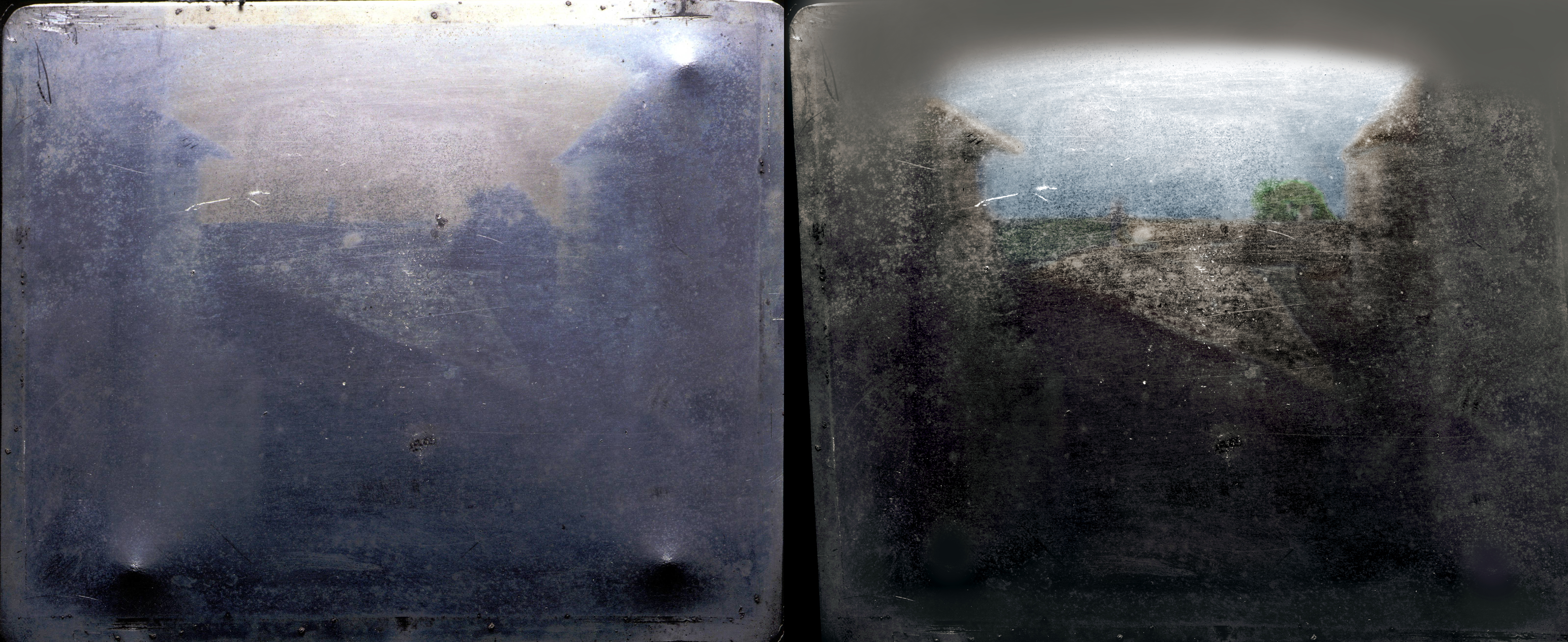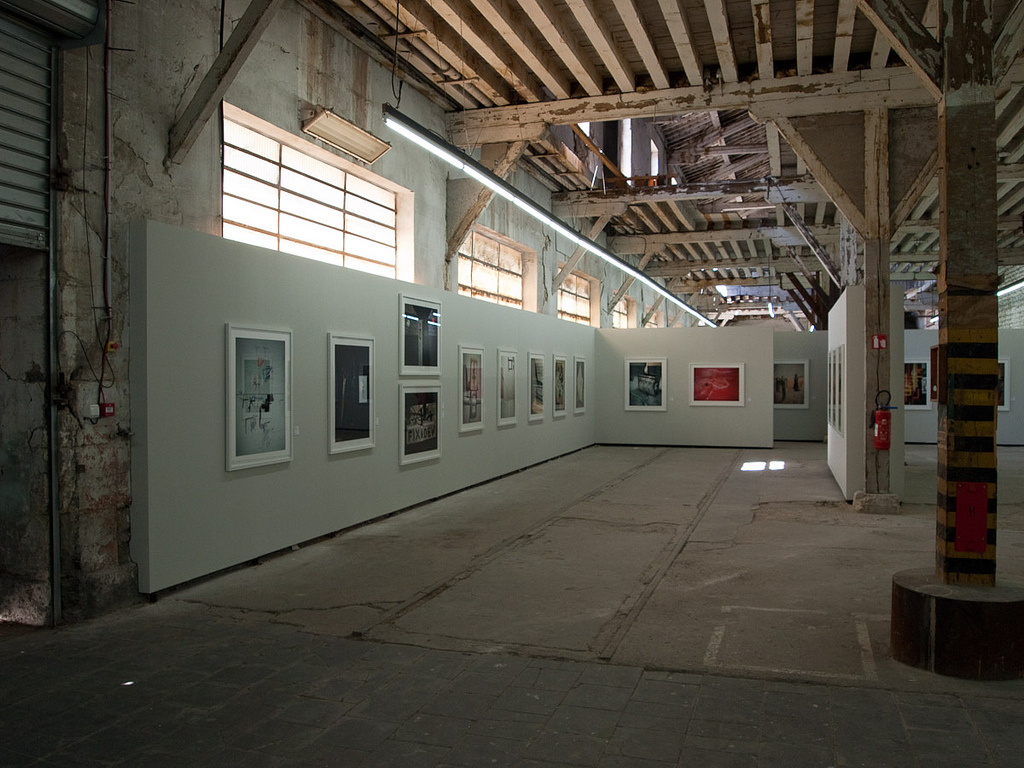|
Keld Helmer-Petersen
Keld Helmer-Petersen (23 August 1920 – 6 March 2013) was a Danish photographer who achieved widespread international recognition in the 1940s and 1950s for his abstract colour photographs. Early years Helmer-Petersen was born and grew up in the Østerbro quarter of Copenhagen. He started taking photographs in 1938, when he received a Leica camera as a graduation present. At an early stage, he became aware of the trends in international photography; in the 1940s he subscribed to the US Camera Annual and in this period became familiar with German inter-war photography, which had developed at the Bauhaus and in the Neue Sachlichkeit (The New Objectivity) movement. The international prospect and an interest in contemporary art and architecture contributed to the fact that at the age of 23, Helmer-Petersen, as one of the first Danish photographers, began to work with an abstract formal language. Inspired by the Bauhaus and Albert Renger-Patzsch, he published in 1948, the bilingua ... [...More Info...] [...Related Items...] OR: [Wikipedia] [Google] [Baidu] |
Bauhaus
The Staatliches Bauhaus (), commonly known as the Bauhaus (), was a German art school operational from 1919 to 1933 that combined crafts and the fine arts.Oxford Dictionary of Art and Artists (Oxford: Oxford University Press, 4th edn., 2009), , pp. 64–66 The school became famous for its approach to design, which attempted to unify individual artistic vision with the principles of mass production and emphasis on function. The Bauhaus was founded by architect Walter Gropius in Weimar. It was grounded in the idea of creating a Gesamtkunstwerk ("comprehensive artwork") in which all the arts would eventually be brought together. The Bauhaus style later became one of the most influential currents in modern design, modernist architecture, and architectural education. The Bauhaus movement had a profound influence upon subsequent developments in art, architecture, graphic design, interior design, industrial design, and typography. Staff at the Bauhaus included prominent ar ... [...More Info...] [...Related Items...] OR: [Wikipedia] [Google] [Baidu] |
Garrison Cemetery, Copenhagen
Garrison Cemetery (Danish: Garnisons Kirkegård) is a cemetery in Copenhagen, Denmark. It was inaugurated in 1671 on a site just outside the Eastern City Gate, as a military cemetery complementing the naval Holmens Cemetery which had been inaugurated a few years earlier on a neighbouring site. Later the cemetery was opened to civilian burials as well. Garrison Cemetery is an independent cemetery, managed by the parochial church council, placed under the army's highest authority. History Originally named ''Soldaterkirkegården'' (Soldiers' Cemetery), Garrison Cemetery was founded by a decree from King Frederick III and laid out in 1664 on a site outside the Bastioned Fortifications, next to the main road leading in and out of the Eastern City Gate and opposite the naval Holmens Cemetery which was laid out around the same time. Burials began the same year but the site, former marshland, was rather unsuitable for the purpose since ground water levels made it hard to bury the bodi ... [...More Info...] [...Related Items...] OR: [Wikipedia] [Google] [Baidu] |
2013 Deaths
This is a list of deaths of notable people, organised by year. New deaths articles are added to their respective month (e.g., Deaths in ) and then linked here. 2022 2021 2020 2019 2018 2017 2016 2015 2014 2013 2012 2011 2010 2009 2008 2007 2006 2005 2004 2003 2002 2001 2000 1999 1998 1997 1996 1995 1994 1993 1992 1991 1990 1989 1988 1987 See also * Lists of deaths by day * Deaths by year {{DEFAULTSORT:deaths by year ... [...More Info...] [...Related Items...] OR: [Wikipedia] [Google] [Baidu] |
1920 Births
Nineteen or 19 may refer to: * 19 (number), the natural number following 18 and preceding 20 * one of the years 19 BC, AD 19, 1919, 2019 Films * ''19'' (film), a 2001 Japanese film * ''Nineteen'' (film), a 1987 science fiction film Music * 19 (band) 19 was a Japanese pop/folk duo. Its members were Kenji Okahira and Keigo Iwase The Japanese language has a system of honorific speech, referred to as , parts of speech that show respect. Their use is mandatory in many social situations. Ho ..., a Japanese pop music duo Albums * ''19'' (Adele album), 2008 * ''19'', a 2003 album by Alsou * ''19'', a 2006 album by Evan Yo * ''19'', a 2018 album by MHD * ''19'', one half of the double album '' 63/19'' by Kool A.D. * '' Number Nineteen'', a 1971 album by American jazz pianist Mal Waldron * ''XIX'' (EP), a 2019 EP by 1the9 Songs * "19" (song), a 1985 song by British musician Paul Hardcastle. * "Nineteen", a song by Bad4Good from the 1992 album ''Refugee (Bad4 ... [...More Info...] [...Related Items...] OR: [Wikipedia] [Google] [Baidu] |
History Of Photography
The history of photography began in remote antiquity with the discovery of two critical principles: camera obscura image projection and the observation that some substances are visibly altered by exposure to light. There are no artifacts or descriptions that indicate any attempt to capture images with light sensitive materials prior to the 18th century. Around 1717, Johann Heinrich Schulze captured cut-out letters on a bottle of a light-sensitive slurry, but he apparently never thought of making the results durable. Around 1800, Thomas Wedgwood made the first reliably documented, although unsuccessful attempt at capturing camera images in permanent form. His experiments did produce detailed photograms, but Wedgwood and his associate Humphry Davy found no way to fix these images. In 1826, Nicéphore Niépce first managed to fix an image that was captured with a camera, but at least eight hours or even several days of exposure in the camera were required and the earliest result ... [...More Info...] [...Related Items...] OR: [Wikipedia] [Google] [Baidu] |
Photography In Denmark
In Denmark, photography has developed from strong participation and interest in the very beginnings of the art in 1839 to the success of a considerable number of Danes in the world of photography today. Pioneers Mads Alstrup and Georg Emil Hansen paved the way for a rapidly growing profession during the last half of the 19th century while both artistic and press photographers have made internationally recognized contributions. Although Denmark was slow to accept photography as an art form, Danish photographers are now increasingly active, participating in key exhibitions around the world. Among Denmark's most successful contemporary photographers are Jacob Aue Sobol, who gained recognition for portraits of his Greenlandic girlfriend, and Per Bak Jensen, who introduced a new perspective to modern landscape photography. Press photography has prospered too under Jan Grarup and Claus Bjørn Larsen, who have covered wars and conflicts of global importance over the past 20 years. His ... [...More Info...] [...Related Items...] OR: [Wikipedia] [Google] [Baidu] |
Aarhus School Of Architecture
The Aarhus School of Architecture (Arkitektskolen Aarhus) was founded in 1965 in Aarhus, Denmark. Along with the Royal Danish Academy of Fine Arts, School of Architecture in Copenhagen, it is responsible for the education of architects in Denmark. The school has approximately 750 students. Educational structure and content Teaching at the Aarhus School of Architecture is studio-based, emphasising group work and project work. The school places an emphasis on practice-based teaching, while maintaining an artistic approach to architecture. Teaching is organised around a number of research labs, based on on-going and close dialogue with teachers. Workshop facilities allow students to explore their ideas in 3D and in 1:1. Other resources include a specialised library, a materials shop and robot lab In 2016 the school's research was restructured as threresearch labs Research Lab 1: Territories, Architecture, and Transformation Research Lab 2: Technology and Building Cultures Resea ... [...More Info...] [...Related Items...] OR: [Wikipedia] [Google] [Baidu] |
Danish House In Paris
House of Denmark (french: Maison du Danemark, da, Danmarkshuset), on 142 in Paris, France, is a building which houses exhibition space used for the presentation of Danish culture and commercial interests. The main venue of the house is the on the second floor. It also contains a Danish restaurant on the ground floor and office space rented out for international companies. History The idea for a House of Denmark abroad was conceived after the Brussels International Exposition in 1935 where Thyse Hvass represented Denmark with his single-family houses. The plans were delayed by the coming of World War II but in 1948 the Danish state acquired the l'Hôtel Subiran on Champs-Élysées. In 1952 the hotel was demolished to make way for the new building which had been designed by Hvass. Ground was broken on 23 September 1952 in the presence of the Danish prime minister Erik Eriksen and the French minister of foreign affairs Robert Schuman. The house was inaugurated on 23 April 1966 wit ... [...More Info...] [...Related Items...] OR: [Wikipedia] [Google] [Baidu] |
Deichtorhallen
The Deichtorhallen in Hamburg, Germany, is one of Europe's largest art centers for contemporary art and photography. The two historical buildings dating from 1911 to 1913 are iconic in style, with their open steel-and-glass structures. Their architecture creates a backdrop for spectacular major international exhibitions. In 2003 the southern hall was dedicated to the medium of photography, creating the House of Photography. Since 2011, the two buildings at the interface of Hamburg's Kunstmeile and Hafencity have been supplemented by a satellite in Hamburg's Harburg district, the Sammlung Falckenberg. History Between 1911 and 1914, the "''Deichtorhallen''" ("the levee gate halls") were built as market halls on the grounds of the former Berliner Bahnhof railway station, Hamburg's counterpart to Berlin's Hamburger Bahnhof. They constitute one of the few surviving examples of industrial architecture from the transitional period between Art Nouveau and 20th century styles. The two h ... [...More Info...] [...Related Items...] OR: [Wikipedia] [Google] [Baidu] |
Rencontres D'Arles
The Rencontres d’Arles (formerly called ''Rencontres internationales de la photographie d’Arles'') is an annual summer photography festival founded in 1970 by the Arles photographer Lucien Clergue, the writer Michel Tournier and the historian Jean-Maurice Rouquette. The Rencontres d’Arles has an international reputation for showing material that has never been seen by the public before. In 2015, the festival welcomed 93,000 visitors; in 2016, the 100,000 visitor mark was reached. Specially designed exhibitions, often organised in collaboration with French and foreign museums and institutions, take place in various historic sites. Some venues, such as 12th-century chapels or 19th-century industrial buildings, are open to the public throughout the festival. The Rencontres d’Arles has launched the careers of numerous photographers, confirming its significance as a springboard for photography and contemporary creativity. In recent years the Rencontres d’Arles has invited ... [...More Info...] [...Related Items...] OR: [Wikipedia] [Google] [Baidu] |
Fotografisk Center
Fotografisk Center is an exhibition space in Copenhagen, Denmark, dedicated to international and Danish photographic art. Since 1 January 2016 it has been based in the Copenhagen Meat Packing District (Det Brune Kødbyen) at Staldgade 16, 1799 Copenhagen V. History The Fotografisk Centre was established in 1996 by the photographer Lars Schwander. It was originally based in the ground floor of Kunstforeningen's building on Gammel Strand When the building closed for a major refurbishment in mid-2008, the centre moved to a temporary address on Amaliegade. Faced with years of disturbance due to the upcoming construction of a station on the new City Circle Line of the Copenhagen Metro, it was decided not to return to Gammel Strand after the renovation but instead to look for new and larger premises. On 1 February 2011 the gallery re-opened in Tap E, a former bottling plant in the Carlsberg area, Carlsberg's which is under redevelopment into a new district and today houses a growing ... [...More Info...] [...Related Items...] OR: [Wikipedia] [Google] [Baidu] |


